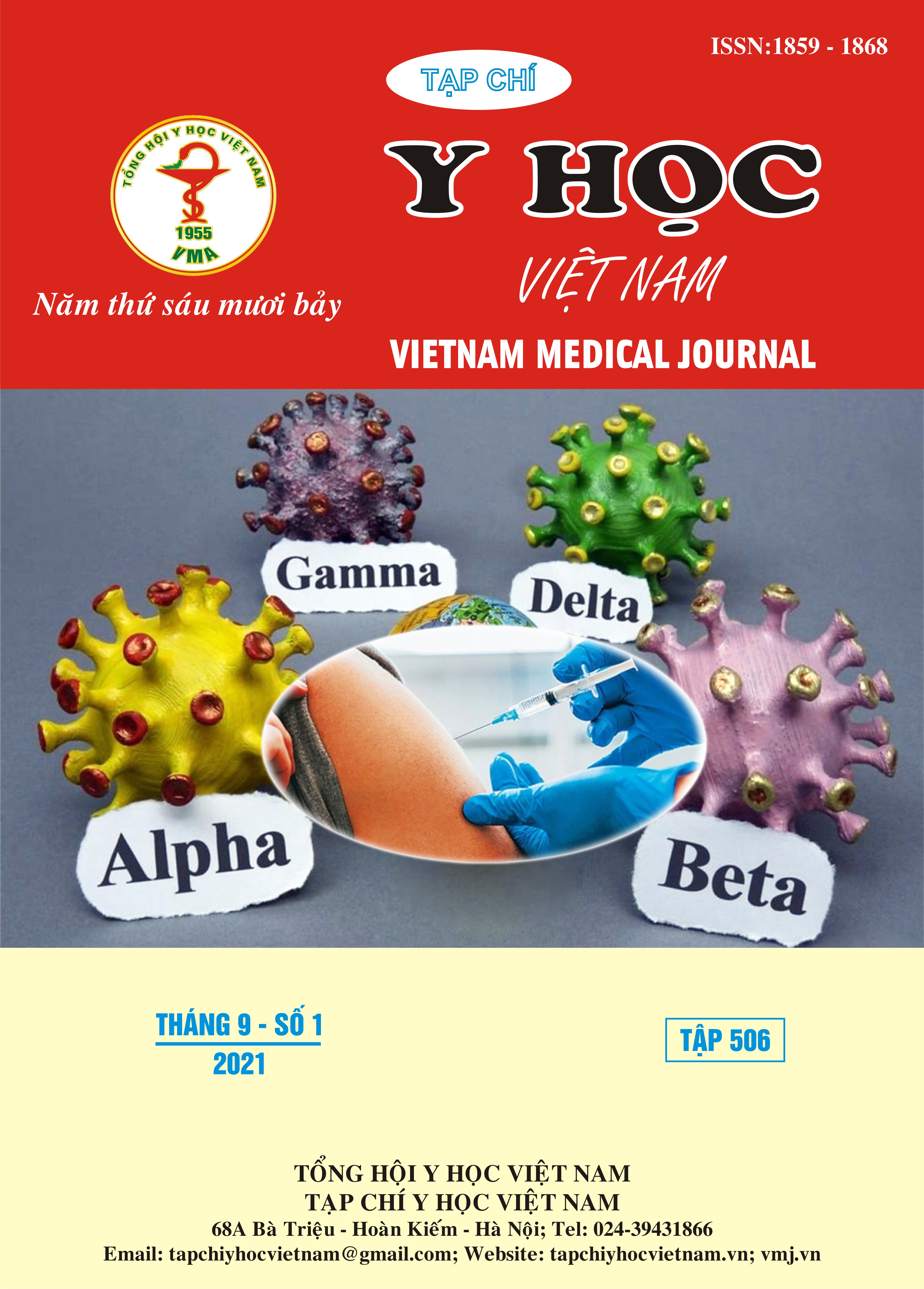FASTING SERUM C – PEPTIDE IN TYPE 2 DIABETIC PATIENTS AND THE ASSOCIATION WITH MICROVASCULAR COMPLICATIONS
Main Article Content
Abstract
C–Peptide is a polypeptide secreted simultaneously and in equimolar amounts with insulin from pancreatic beta cells. By measuring fasting serum C – Peptide, we can evaluate endogenous insulin reserve in diabetic patients. Aims: To survey on fasting serum C – Peptide and to comment on the association between fasting serum C – Peptide and diabetic retinopathy and urine albumin. Subjects and methods: cross-sectional description study of 87 patients with a diagnosis of type 2 diabetes at Bach Mai Hospital from January 2021 to August 2021. Results: In this study, the mean value of fasting serum C – Peptide is 0,83 ± 0,35 nmol/l. Negative correlation was seen between fasting serum C – Peptide and urine albumin level (r=-0,352, p=0,001, spearman test).The mean values of fasting serum C–Peptide in patients with microalbuminuria and no microalbuminuriaare 0,72 ± 0,34 nmol/l and 0,88 ± 0,35 nmol/l respectively. Also in this study, the mean values of fasting serum C – Peptide in patients with diabetic retinopathy and no diabetic retinopathy are 0,72 ± 0,33 nmol/l and 0,9 ± 0,36 nmol/l respectively. Conclusion: The mean value of fasting serum C – Peptide in this study is 0,83 ± 0,35 nmol/l. The current study showed a significant correlation between fasting serum C – Peptide and urine albumin level. Fasting serum C – Peptide was significantly associated with diabetic retinopathy and microalbuminuria.
Article Details
Keywords
Fasting serum C – Peptide, diabetic retinopathy, microalbuminuria
References
2. Ahmad T, Ulhaq I, Mawani M, Islam N. Microalbuminuria in Type-2 Diabetes Mellitus; the tip of iceberg of diabetic complications. Pak J Med Sci. 2017;33(3):519-523. doi:10.12669/ pjms.333.12537
3. Yau JWY, Rogers SL, Kawasaki R, et al. Global prevalence and major risk factors of diabetic retinopathy. Diabetes Care. 2012;35(3):556-564. doi:10.2337/dc11-1909
4. Chowta MN, Adhikari PM, Chowta NK, Shenoy AK, D’Souza S. Serum C peptide level and renal function in diabetes mellitus. Indian J Nephrol. 2010;20(1):25-28. doi:10.4103/0971-4065.62093
5. Masoom MM, Albiladi F. C-Peptide as a Marker for Diabetic Nephropathy. Intern Med Open Access. 2017; 07(03). doi:10.4172/2165-8048. 1000245
6. Bo S, Cavallo-Perin P, Gentile L, Repetti E, Pagano G. Relationship of residual beta-cell function, metabolic control and chronic complications in type 2 diabetes mellitus. Acta Diabetol. 2000;37(3):125-129. doi:10.1007/s005920070014
7. Sjöquist M, Huang W, Johansson BL. Effects of C-peptide on renal function at the early stage of experimental diabetes. Kidney Int. 1998; 54(3): 758-764. doi:10.1046/j.1523-1755.1998.00074.x


